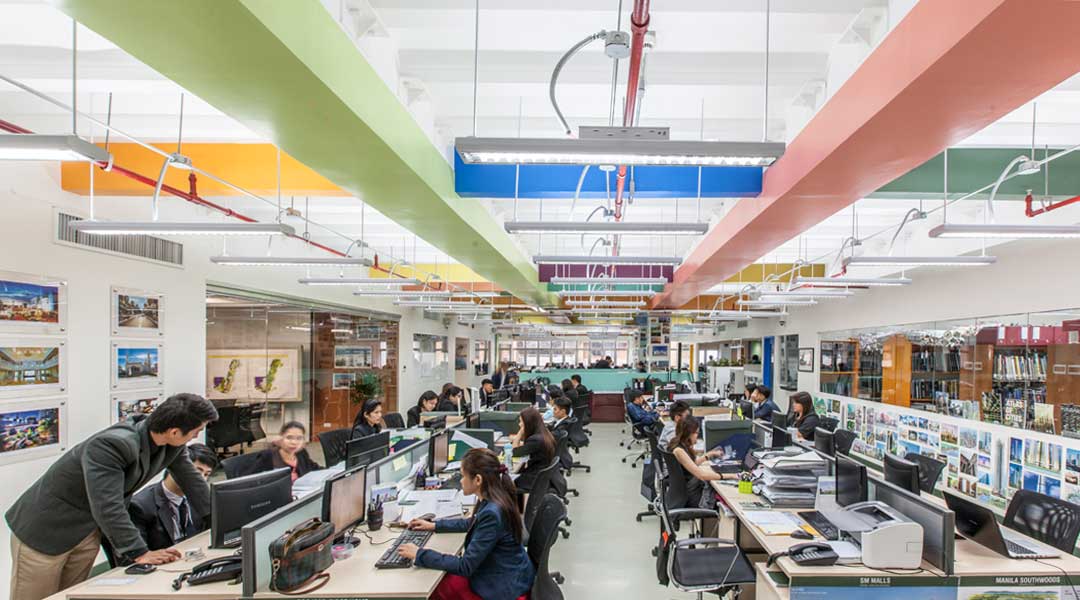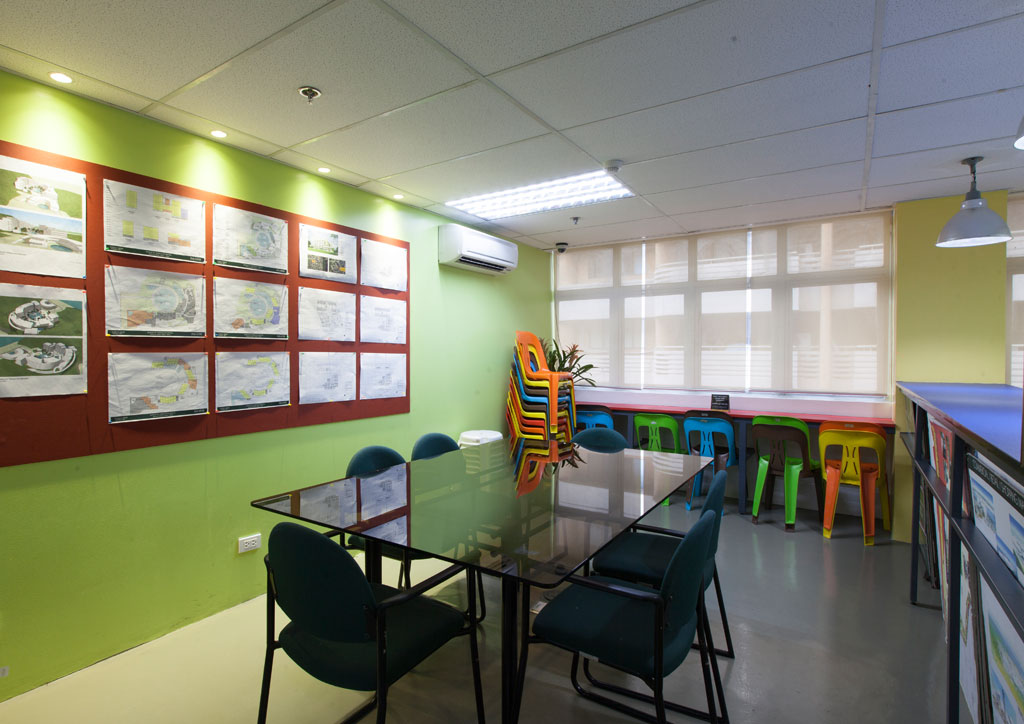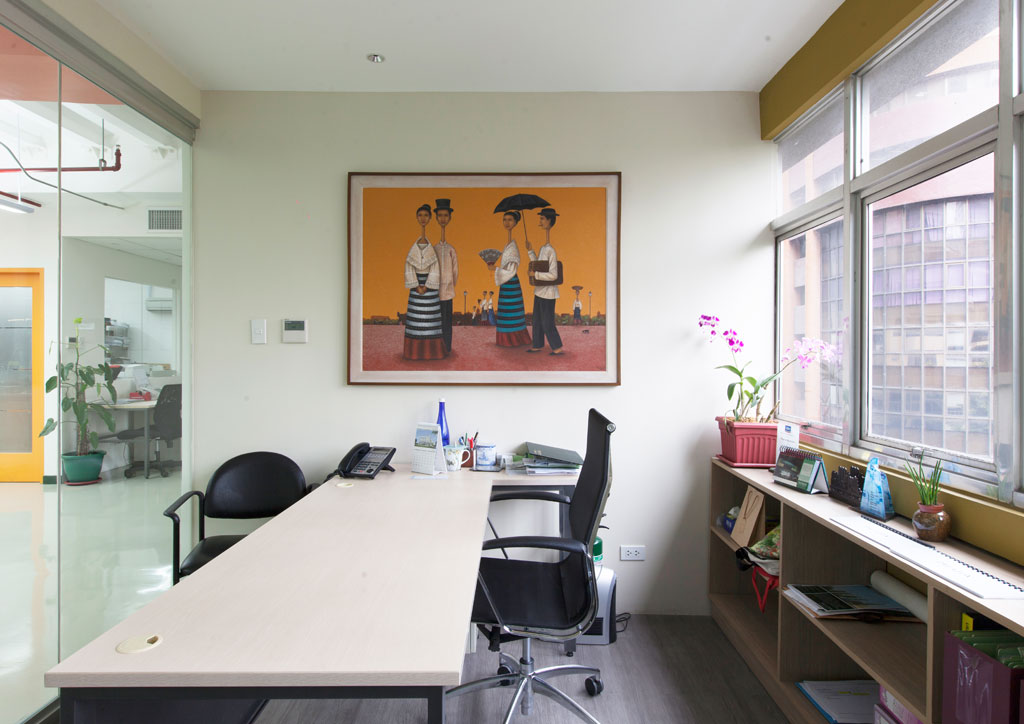
Palafox benefits from structuring business into two companies
The Palafox group moved into its new home at the PCCI Corporate Center in Salcedo Village, Makati in February 2015. The move came at an auspicious time. Seven months prior, on the occasion of its 25th anniversary, the company surprised the industry with news of a corporate spinoff, a form of restructuring where a division or department, splits off from its parent company, resulting in a new corporate entity or subsidiary.
Palafox Associates organized its architecture studios into a new company called the Palafox Architecture Group. The new corporation offers comprehensive architectural services including interior design, project management, and animation. Meanwhile, services such as master planning, site planning, urban design, engineering, and real estate development consultancy remain with the parent company, Palafox Associates. While Palafox Architecture Group is the de facto architecture company, Palafox Associates continues to take on architecture projects abroad having built relationships with clients in 39 countries. The spinoff is part of the firm’s bigger strategy to build a multi-disciplinary group of companies.

Palafox Associates managing partner Karima “Karmi” Palafox explains, “Clients prefer working with multi-disciplinary companies. They want those that provide not only architecture services but also engineering, planning, graphics design, etc.” However, the Philippine constitution discourages collaboration with foreign companies, requiring all companies to be majority-owned by Filipinos. Then there’s the bigger problem with separate laws regulating the practices of architecture, interior design, and environmental planning, all of which require the principals, directors or officers to have individual licenses to practice each profession.
READ MORE: Succeeding Success: Jun and Karmi Palafox

Karmi Palafox, daughter of the firm’s founder Felino “Jun” Palafox, has taken over the leadership of Palafox Associates. The younger Palafox is a talented urban planner, a chartered planner of the Royal Town Planning Institute (RTPI) in the United Kingdom, and vice president of the Philippine Institute of Environmental Planners (PIEP). She has years of experience drafting development plans for cities, provinces, and islands. But Karmi Palafox is no architect. She holds a master’s degree in industrial economics and another master’s degree in urban planning from Oxford Brookes University.
Republic Act 9266, the Architecture Law of 2004, requires that at least seventy-five percent of an architecture firm’s incorporators, shareholders, or officers be registered and licensed architects. It’s a flaw in the law that prevents firms from going multi-disciplinary in this age of globalization and ASEAN integration.
“In the Philippines, you can’t have a multi-disciplinary company unless you have leaders who all have the necessary license for each of the professional services you offer. This protectionist stance is hurting instead of helping us. While we don’t agree with this kind of protectionism, we have to abide by it,” says Palafox. She sits on the Board of Directors of Palafox Architecture Group together with her father and four other architects.

For Palafox, it’s also better for a company to be a corporation than a partnership in the long term (See BP Special Issue 1, Partnership versus Corporation). “We didn’t want to treat the firm as a family business. If you look at the example of admired companies all over the world, like HOK, SOM, and RTKL, most people don’t even know who the names in the initials are. They’re hired not because of the personalities of their principals, but because of the professional services they offer,” says Palafox.
When Palafox Associates was founded in 1989, architecture firms were only allowed a partnership structure. It was in 2004, when the new architecture law was passed that firms were allowed to be structured as corporations. “We were advised that it is not possible to convert an existing partnership into a corporation. So we resorted to the alternative of a spinoff,” says Palafox.

Another reason the firm decided to pursue this path is to highlight its architecture practice, the core of its business. Palafox Associates was the first Filipino company to be recognized by the World Architecture Magazine of London among the top architecture firms in the world. “Our firm is usually top of mind for clients when it comes to planning, but in terms of architecture, it’s getting quite competitive out there. There are already more than 40,000 architects with varying practices when it comes to the size of staff, software licenses, marketing, taxes, and all that. To some extent, there is no longer a level playing field,” says Palafox.
The management is already seeing the benefits of the spinoff. Barely two years since its incorporation, Palafox Architecture Group made it to BCI Asia’s list of Top 10 Architects in the country, a recognition the parent company, Palafox Associates, used to hold for nine consecutive years.

The spinoff didn’t happen overnight. “We would often ask ourselves, ‘Why are we doing this?’ It’s tough enough to manage a company, what more managing two,” says Palafox. She wisely invested in hiring finance, human resources, and legal advisers to help them put up the new company. One of the biggest challenges was the transition of staff and line managers from one company to another. The tenures of those who transferred to the new company were respected.
Company policies are largely the same for both. Regardless which company you’re part of, performance evaluations are based on merit and service record. Karmi Palafox is thankful for the support and buy-in she got from her staff. She admits that some administrative offices, such as HR, purchasing, finance, and contracts were burdened with more work after the spinoff because now they have to prepare separate financial statements, balance sheets, income tax returns, and other documents required by regulatory offices.
READ MORE: Tech and segmentation bolster operations in AIDEA Philippines
Though they are two different companies on paper, they still consider themselves one big team. “We’re currently doing an international project with several building types. There’s a lot of collaboration involved between the planners, architects, our structural engineers, and production team. It’s not like there’s a wall between the two companies,” says Palafox. ![]()


